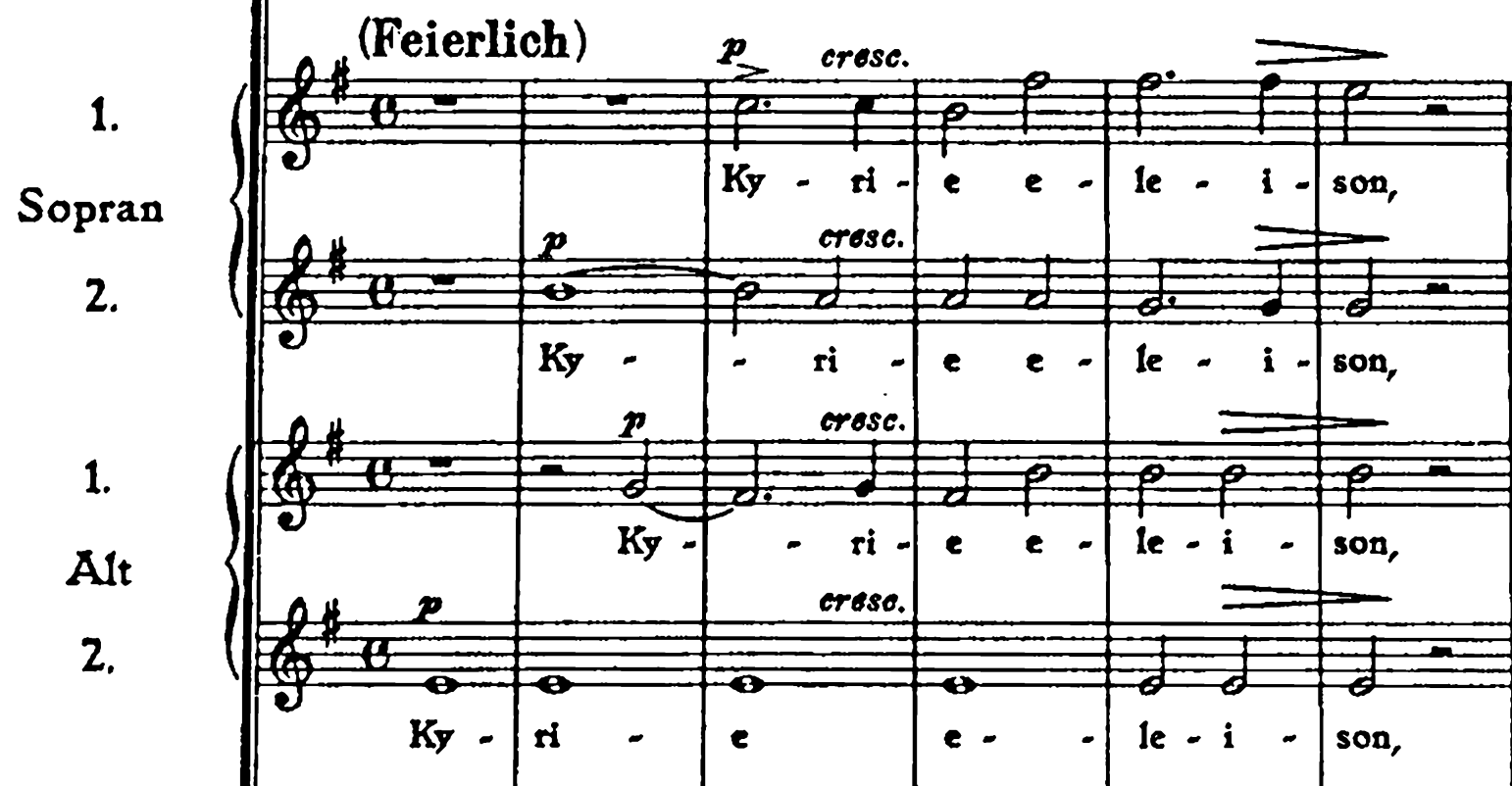Mini Essay I: Bruckner - Mass No. 2, WAB 27
This harmonic analysis will focus on the opening phrase of the Kyrie in Bruckner’s Mass No. 2 in e minor.
Thus far, in my reading of Tchaikovsky’s Guide to the Practical Study of Harmony (1900), he has introduced two strategies for confirming a key. The first strategy is composing a cadence of the first group—this cadence contains the three functions found in tonal harmony: the tonic, sub-dominant, and dominant (resolving back to the tonic); it is this relationship that, to our ears, explicitly confirms the key we are in (Tchaikovsky pg. 77). The second strategy is the organ-point or pedal point which Tchaikovsky states is “nothing more than a further development of the ordinary cadence of the first group” (Tchaikovsky pg. 77).
An organ point is most often found at the end of a piece of music employed to establish the original key when a composer has modulated far away (a cadence of the first group may not suffice in this case). However, Tchaikovsky notes that it can also be found at the beginning or end of a piece of music. In this case, the organ point is usually composed on the tonic, is of short duration, and the first and last chords must harmonize with the bass (Tchaikovsky pg. 80). As seen in Fig.1, Bruckner’s passage seems to align with the guidelines recommended by Tchaikovsky.
Fig. 1 - Opening Phrase (bars 1-6) of the Kyrie.
I interpret this first phrase (bars 1-6) as a highly decorated e-minor triad. Alto II holds the tonic pedal—alto I is just G, the third of the e-minor triad moving up to B, the 5th via accented neighbor tones. Soprano II moves from B the 5th down to G the third via 4-3 suspension (resolving in measure five). Soprano I is B moving to the tonic E decorated with an appoggiatura starting on the 3rd beat of measure four and resolving on the first beat of measure six.
Dissonance resolving is tension released—the effectiveness of the harmony in this opening phrase is not in harmonic movement but in the contrast of dissonance and consonance. The consonant e minor triads enclose the dissonant chords in measures four through six—the appoggiatura and its resolution, placed in the highest voice, heightens the feeling of closure—the silence that follows (half note rest) confirms the closure and the end of the phrase. Thus Bruckner is able to confirm the tonal center of e-minor without a perfect authentic cadence.
Tchaikovsky states at the beginning of the Second Section of his harmony treatise, “Suspensions, passing-notes, and changing notes greatly enhance the melodiousness of the voices; the simplest chord—succession can, by means of these attributes of voice-leading, be exalted to a high pitch of artistic and technical perfection” (Tchaikovsky pg.116). The opening of this mass encapsulates this quote.
